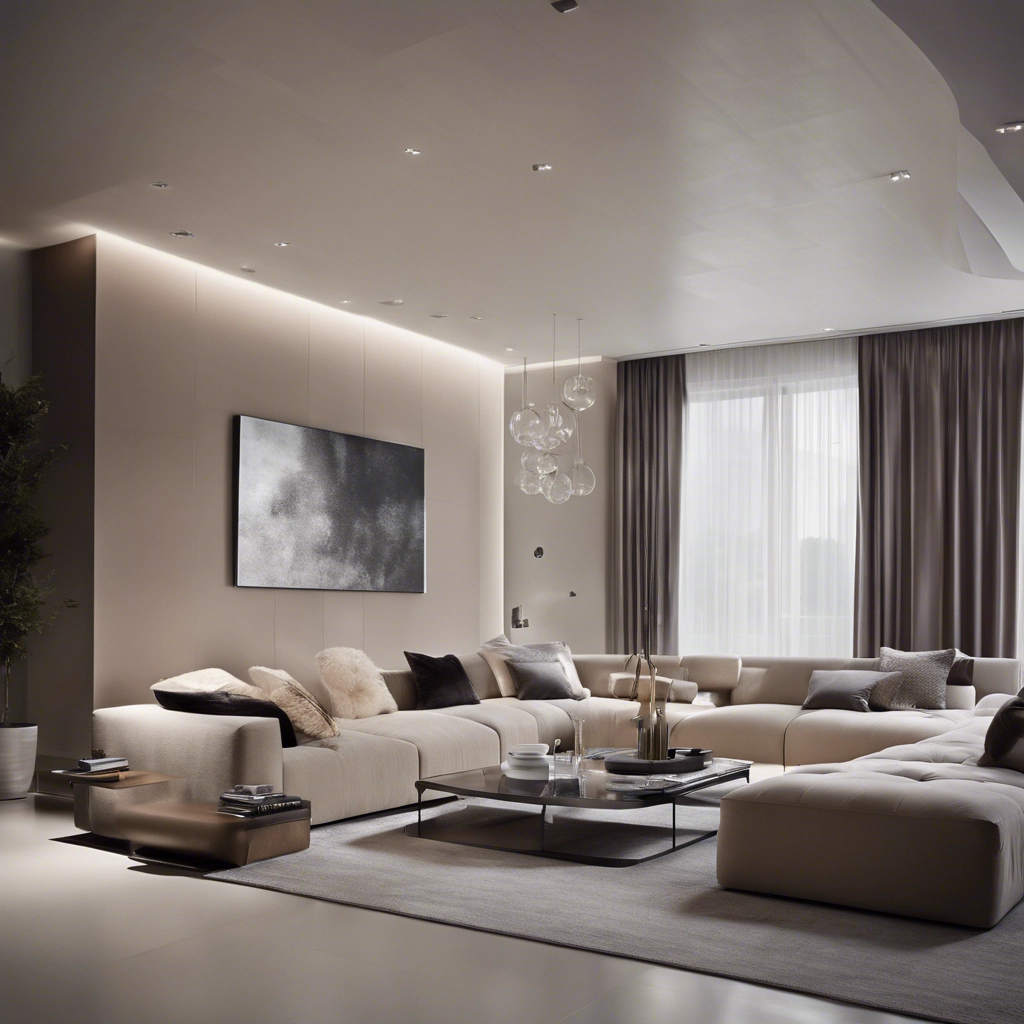When it comes to home and commercial painting, tackling different textures and wall finishes is a skill that professional painters possess in abundance. The ability to transform walls with varying textures—such as smooth, rough, or specialty finishes—requires specialized knowledge, tools, and techniques. The goal is not just to add color to a surface but to enhance the texture while ensuring a flawless and long-lasting finish.

Precision Painting has built its reputation on a deep understanding of the nuances involved in handling various wall textures. Whether a smooth finish in a modern home or a textured feature wall in a commercial space, skilled painters adapt their methods to suit the wall type. Below, we’ll explore the methods that professional painters use when working with different wall textures and finishes.
Smooth Finishes: The Foundation of Clean, Sleek Walls
Smooth walls are often considered the most straightforward finish to work with, but achieving the perfect smooth surface requires skill. Whether painting drywall or plaster, the painter’s job is to ensure that the surface is even and flawless.
- Preparation is Key: Before applying the paint, the surface must be thoroughly cleaned and prepared. This includes patching up any holes or imperfections with spackle or joint compound. Once the filler is dry, it’s sanded down to create a perfectly smooth surface.
- Primer Application: A primer is essential, especially for bare drywall or patched areas. It helps seal the surface and creates an even base for the paint.
- Painting: After the primer has dried, professional painters apply the first coat of paint. They may use a roller or brush, depending on the space and type of paint. A high-quality brush ensures crisp edges, while a roller provides an even coat.
- Finishing Touches: After the first coat has dried, additional layers of paint are applied, followed by a light sanding between coats to maintain the smooth finish.
While the process might seem simple, the attention to detail and patience required for smooth finishes are essential for achieving a perfect result.
Textured Walls: The Challenge of Depth and Character
Textured walls—such as those found in many older homes—present a unique challenge for painters. Textures like popcorn ceilings, knockdown finishes, or sponge-painted walls require specific techniques.
- Popcorn Ceilings: Popcorn ceilings (also known as acoustic ceilings) are a common feature in many homes built before the 1980s. Painting over this texture requires careful attention to avoid making the surface look heavy or clumpy. Professional painters may lightly mist the ceiling with water to soften the texture before painting over it.
- Knockdown Texture: Knockdown finishes are often found in modern homes. These surfaces are made by spraying a thick layer of joint compound, then flattening it slightly with a trowel to create a textured look. When painting knockdown surfaces, professionals will usually apply a bonding primer to ensure the paint adheres to the texture. A roller is then used to apply paint, ensuring that the texture stands out without being overpowered by the paint.
- Sponge or Rag Rolling: For more intricate textures like faux finishes, painters use specialized sponges or rags to apply and manipulate the paint. This method is often used to create the appearance of depth and variation in color, giving a wall a unique, custom look.
Working with textured walls requires not just the right tools but also an understanding of how to handle the surface to bring out its beauty without compromising its integrity.
Specialty Finishes: Faux and Artistic Techniques
Some walls feature specialty finishes that require artistic talent and a keen eye for detail. Faux finishes, metallic finishes, and Venetian plaster are just a few examples of the specialty techniques professional painters might employ.
- Faux Finishes: Faux painting techniques mimic natural materials like marble, wood, or stone. These finishes are achieved by using layers of paint and glazes, applying them in patterns that simulate the look of the desired material. It takes both technique and experience to apply faux finishes seamlessly, often requiring several layers and careful blending to create a convincing effect.
- Metallic Finishes: Metallic paints create a shimmering effect, making them ideal for accent walls or decorative elements in a room. These paints are often thicker than standard paints, and professional painters must apply them with a careful, consistent hand to avoid streaking. The surface may require a base coat before the metallic finish is applied to ensure even coverage.
- Venetian Plaster: This luxurious, marble-like finish is created by applying layers of plaster to the wall, then polishing it to a smooth, shiny surface. Applying Venetian plaster is an intricate process that involves skillful use of a trowel and a delicate hand to build up the layers. Once the final layer is polished, the result is a sophisticated and durable surface.
These specialty finishes are not for the inexperienced. They require both artistic ability and technical expertise to achieve the intended result.
Wood Paneling and Wainscoting: Adding Elegance with the Right Touch
Wood paneling or wainscoting adds elegance and texture to a room, but it also requires a different approach than flat walls. Whether you’re dealing with traditional wood paneling, beadboard, or more modern MDF wainscoting, professional painters use specific techniques to enhance the wood’s natural beauty while ensuring a smooth finish.
- Surface Preparation: Wood paneling often requires more preparation than drywall because it tends to absorb paint unevenly. Professional painters start by sanding the surface to remove any dirt or old finishes and create a smooth texture for painting.
- Priming: Wood is porous, so a primer is essential to prevent the paint from soaking into the material and to ensure even coverage.
- Application: Professional painters typically use brushes for this type of work to ensure the paint gets into all the grooves of the paneling. Roller application can lead to streaks or uneven coverage, especially on intricate designs like wainscoting.
The key to a perfect finish is attention to detail—ensuring that every groove, corner, and surface is perfectly coated.
Ceiling Treatments: Overhead Details Matter
Ceilings are often overlooked in many painting projects, but they can significantly impact a room’s overall aesthetic. From simple flat ceilings to textured or coffered designs, ceilings require a tailored approach.
- Flat Ceilings: Flat ceilings are generally easier to paint, but they require precision, particularly around edges and corners. A professional painter will use an extension pole to reach the ceiling and a brush to cut in the edges.
- Textured Ceilings: As with walls, textured ceilings such as popcorn ceilings require special care. The painter may need to first dampen the texture slightly to avoid disturbing it and causing a mess.
- Coffered or Tray Ceilings: These ceilings have a more intricate design, which means extra care must be taken with masking and cutting in the edges. Some sections of the ceiling may need to be treated as a feature, with different paint finishes applied to the central part and the perimeter.
Ceiling treatments often set the tone for a room, and professional painters ensure that these overhead elements complement the walls and the overall design scheme.
Dealing with High or Difficult-to-Reach Surfaces
Not all walls are easy to paint. Some surfaces are difficult to reach due to high ceilings or awkward angles. In these cases, professional painters use specialized equipment such as ladders, scaffolding, or even lifts to access the hard-to-reach areas. Ensuring safety is paramount when dealing with high surfaces, and professional painters are trained to handle these situations effectively and securely.
Additionally, painters need to be meticulous when working in tight spaces or around obstacles such as furniture or intricate architectural features. The use of drop cloths, painter’s tape, and masking is crucial to keep the work area clean and protect surrounding elements.
Why Choose Precision Painting?
When you hire Precision Painting, you’re not just getting a coat of paint—you’re getting a team of experts who understand the complexity of working with different wall textures and finishes. Our painters bring years of experience and a commitment to excellence, ensuring that every wall, ceiling, and surface is treated with the utmost care and precision.
From smooth walls to textured ceilings, we have the tools and techniques to bring your vision to life. Whether you’re looking for a clean, modern look or something more intricate and unique, we guarantee a flawless result that will enhance the beauty and longevity of your space. Choose Precision Painting for your next project, and experience the difference in quality and professionalism.

